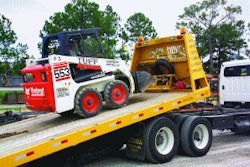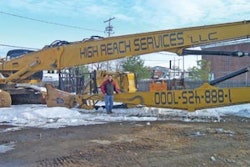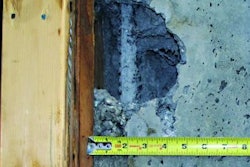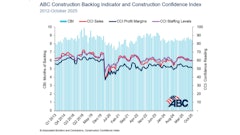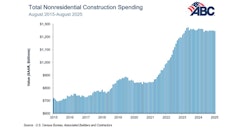The Privette Doctrine, which holds that owners and general contractors are not liable for injuries to the employees of subcontractors unless they have affirmatively done something by act or omission to cause the injury, has an almost 20 year history in California. In 1993, the California Supreme Court in Privette v Superior Court found that a homeowner was not liable for injuries when a roofing subcontractor's employee was burned by hot tar. Over the years, the doctrine has been extended to general contractors. At the same time, exceptions have been carved out of the original holding involving breach of a non delegable duty imposed by statute, for supplying defective equipment and for the failure to warn of hidden dangerous conditions. None of these exceptions undermined the primary rationale behind Privette shifting liability for injuries to subcontractor employees back to the subcontractor for policy reasons due to the availability of workers compensation benefits. In the absence of affirmative negligence of the property owner or general contractor, the courts have reasoned that the subcontractors are in the best position to protect the welfare of their own employees.
The California Supreme Court is currently considering a case which may again redefine the parameters of the Privette Doctrine or at the very least clarify the extent and nature of one of the most contested exceptions. Specifically, in the case of Seabright Insurance v Lujan, the court is addressing and most likely will harmonize the two lower court strands of decision which establish when a duty imposed by statute may be delegated by the property owner and/or general contractor to the subcontractor and when alternatively the duty is considered to be non delegable and therefore defeats Privette.
The pending Seabright case involves severe injuries incurred by a subcontractor employee responsible for the maintenance of certain luggage conveyors at the San Francisco Airport who became caught in a machine because of a missing guard required to be present by Cal OSHA regulations. Defendant US Airways, which leased the premises, including the conveyor in question, successfully moved the court for summary judgment arguing that, as the injured person was an employee of a subcontractor, it was allowed to delegate the responsibility and liability for his safety to his employer subcontractor, leaving workers compensation as the exclusive remedy. The opposing argument is that the Cal OSHA regulations imposed a non delegable duty on US Airways, which in turn would defeat their Privette defense.
Both arguments have their support in lower court case law. In 2007, the Court of Appeal in the case of Evard v Southern California Edison found that a Cal OSHA regulation requiring that a safety line be installed at all times on a billboard in the absence of a guardrail imposed a non delegable duty on the defendant owner of the sign when a subcontractor employee changing the billboard fell. The Evard court reasoned that Privette did not abolish liability for breach of a duty imposed by statute or regulation.
However, in 2008, a different court, in the case of Padilla v Pomona College considered similar facts and arguments and came to a different conclusion. In Padilla, the plaintiff, an employee of a demolition subcontractor, was injured when an unpressurized pipe he was dismantling struck a pressurized pipe outside the scope of the demolition and the blast of water knocked him off his ladder.
The plaintiff argued that Cal OSHA regulations required that all utilities be capped, secured or otherwise protected during demolition and that the general contractor, like the billboard owner in Evard, had a non delegable duty to comply with these regulations and could not delegate the same to the demolition crew.
The Padilla court disagreed, noting that the regulations in question simply required that the utilities be shut off or secured without assigning direct responsibility to any specific entity or person. Implied in the Padilla holding is the idea that while it is no great hardship to an owner of a billboard to install permanent safety measures, the general contractor of a temporary construction project should be able to delegate the safety of its subcontractor's employees and compliance with Cal OSHA regulations to the entity that best understands the nature, scope and day-to-day activity of the work itself--namely to the subcontractor.
The facts currently presented in Seabright are a hybrid of these two scenarios. The injured subcontractor employee was working around permanently affixed baggage handling equipment. Arguably, as in Evard, US Airways should be required to comply with safety regulations involving the machines it leases. However, the plaintiff's employer was specifically hired to maintain these machines, including the conveyor. The plaintiff is not the billboard worker changing the sign who happens to fall because of a lack of a Cal OSHA required safety line. Rather the plaintiff was the very person who was supposed to keep the conveyor functioning and he was injured performing that task.
The distinction is an important one since imposing the responsibility for all Cal OSHA and similar regulations onto owners and general contractors alone could completely swallow the Privette Doctrine because of the numerous regulations relative to construction projects and worksites. For that reason, we believe that the California Supreme Court will follow the narrow trail blazed by Padilla. In other words, the regulation in question must be tailored so that compliance by a specific entity or person is required making the regulation truly non delegable and imposed on that entity or person alone.
For subcontractors and their employees, it is important to recognize that the court allows property owners and general contractors to shift liability away from themselves in the absence of affirmative acts or omissions by them. This is particularly relevant in multi-contractor job site litigation in which legal responsibility might be shared by a number of defendants potentially reducing the overall exposure for a single contractor. But the Privette Doctrine may effectively eliminate the participation of the general and/or the owner in settlement discussions or judgment.
However, nothing in the doctrine prevents a subcontractor from negotiating an indemnity agreement in its favor and inserting clarifying language regarding who is responsible for specifically complying with certain safety regulations like those being considered in Seabright. Arm’s length contractual agreements which shift liability in exchange for negotiated benefits are still a viable option even in the face of tort doctrines like Privette since, well drafted, they are interpreted by the courts to be evidence of the party's intentions.
Privette appears to be here to stay in California. It should be considered when negotiating the next subcontract with an owner or general contractor.
An associate with Gray Duffy LLP, Michelle MacDonald has more than 20 years of litigation experience, notably personal injury, construction defect, Federal statutory claims, insurance law and governmental tort liability.


